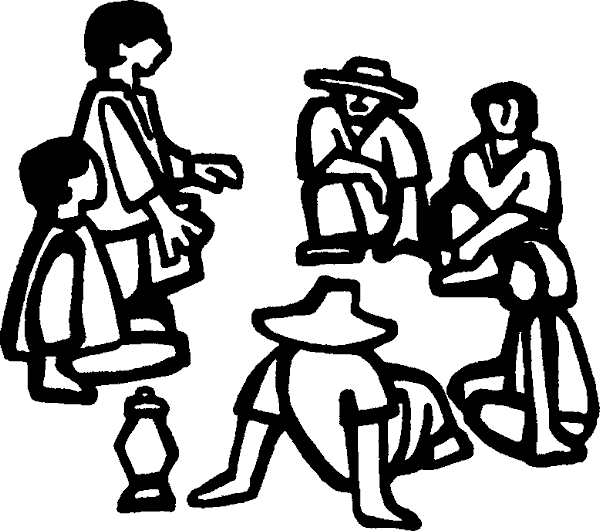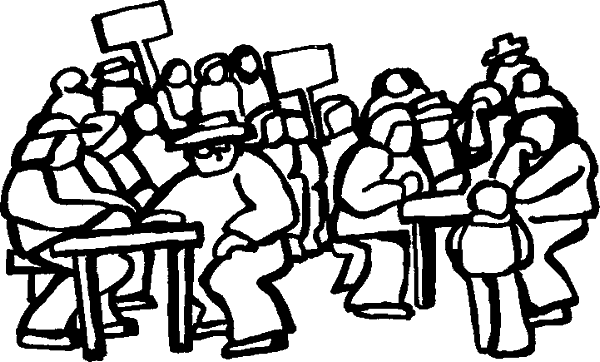Students
read and discuss case stories of young human rights advocates.
They then consider what problems exist in their community
or school and relate them to human rights principles. They
role play these problems and possible solutions and discuss
student activism.
| Time: |
1-1/2
hours or 2 class periods |
| Materials: |
Copies
of Handout 1, Stories of Students Who Took Action,
and Handout 2, Questions about the Stories, for each
group
For older students: Copies of the Universal
Declaration of Human Rights and/or the Convention
on the Rights of the Child (CRC). |
| Setting: |
Elementary school |
| Links:
|
Should be preceded
by activities that introduce rights principles and
the UDHR (e.g., Part III, Activities 1-6).
Part III, Activity 7, Mapping Human Rights, relates
rights to the local community. |
1.
Read the case stories to students or ask older students
to read them to each other in small groups.
2.
Divide the class into 6 groups. Give each a copy of one
of the stories and discussion questions. Ask the groups
to read their stories aloud and answer the questions on
the sheet.
3.
When each group has finished the questions, discuss the
different responses and interpretations the stories elicited.
4.
Ask what human rights issues appear in each of the three
cases and list these on the board. Ask older students to
link these to specific articles in the UDHR or CRC.
5.
Discuss:
- What
are some human rights problems in our community? In our
school? (List issues as they are mentioned.)
- Which
of these problems could be affected by students taking
action?
- What
specific human rights are involved in the problems that
students might address? (List the rights; ask older students
to match them with articles of the UDHR.)
6.
Ask students, working in the same small groups, to choose
one community or school problem from their class list and
use it to create a short role play. Role plays should –
- identify
the human right problem
- identify
the community member(s) affected by the problem
- illustrate
a possible solution
7.
After each group has presented its role play, discuss some
of these topics:
- Who
has responsibility for human rights? Do individuals as
well as the government? Do young people as well as adults?
Can the class provide examples?
- Can
students really make a difference? Are the case stories
unusual, or could they happen in this community or school?
- When
students reconsider the list of problems generated in
Step 5, which ones do they think could be affected by
the actions of people like themselves?

Going
Further
1.
Stories of Action – Ask students to write a
story, draw a picture, or make a collage describing a situation
in which they or a friend took action to solve a problem.
2.
Strategizing Action – Have students brainstorm
as a class or make lists individually to answer the following
questions:
- To
whom would you talk or write if you wanted to solve a
problem at school?
- To
whom would you talk or write if you wanted to solve a
problem in your neighborhood?
3.
Helpful considerations for the teacher
- The
role play and activities in "Going Further"
will provide insights into students’ perceptions
about the decision-making process in their school and
community. In the discussion you may wish to explore their
ideas about the power and responsibility of certain individuals
or decision-making bodies, such as the principal or school
board. You will want to correct their misperceptions and
extend their understanding of the appropriate avenues
through which they can address their concerns. Ideally
this exercise will lay the groundwork for enabling students
to use the appropriate channels to have their opinions
and concerns heard.
- Discuss
with students the possibility of responding to a human
rights problem together as a class. It is important that
students always are permitted to choose the community
action topic. It must be something they can relate to
and care about.
Source:
Karla Stone, teacher, Armstrong
High School, Plymouth, Minnesota.


